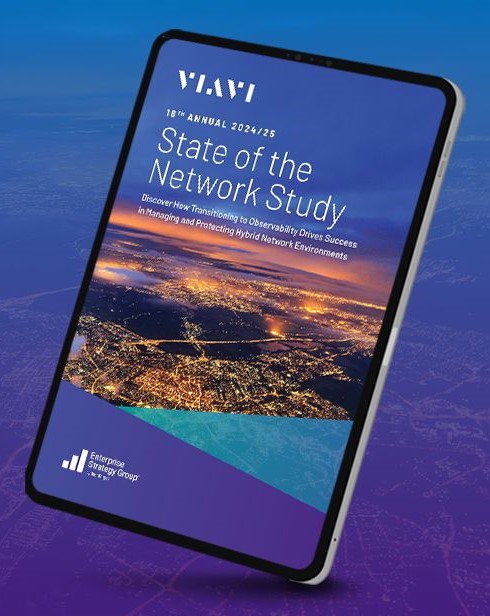
We now know that observability goes well beyond traditional network monitoring practices to take real-time visibility to the next level. It is worth taking a closer look at the ingredients needed to convert disparate data sources into actionable insights. With the quest for observability sometimes curtailed by network complexity, a holistic approach is essential.
ho·lis·tic:
/hōˈlistik/
Characterized by a belief that the parts of something are interconnected and can be explained only by reference to the whole.
Generative AI provides a topical example of technology relying on a holistic approach, with the volume, quality, and diversity of data converging to deliver extraordinary results. In much the same way, true observability leaves no stone unturned when combining network data sources to paint a complete picture.
A Whole Greater Than the Sum of Its Parts
The traditional three-pillared approach to network observability includes time-stamped logs to capture network activity, traces to recount the paths traversed during each network request, and metrics to track important KPIs like packet loss and throughput. As packet capture, storage, and recall technology improves, deep packet inspection (DPI) has emerged as an additional cornerstone of holistic network observability.
Each of these data sources provides value and insight independently, but it is the combination of real-time data with contextual knowledge that differentiates observability from traditional monitoring. Network observability practices rely on advanced analytics, data visualization, and machine learning algorithms to convert data into actionable insights and enhanced performance.
Network Data with a Purpose
Networks never stop evolving, so observability tools must avail new sources of real-time data to keep pace. The best observability tools broaden their scope by incorporating cloud data sources to optimize visibility and enhance the end-user experience.
- Cloud data sources
Hybrid and multi-cloud environments present roadblocks to network observability that require new data sources and strategies to overcome. According to the VIAVI 2024/25 State of the Network Study, 80% of the organizations surveyed reported high difficulty in maintaining public cloud (IaaS) visibility. VPC flow logs accelerate troubleshooting and enhance visibility in AWS environments. For Azure cloud environments, network security group (NSG) flow logs help to eliminate blind spots in the absence of native packet capture support.
As cloud data sources are adapted, ongoing refinement is needed to ensure packet and flow data sources from the cloud are fully integrated with traditional data sources. Reducing the dependency on cloud service providers (CSPs) for cloud visibility is one key to seamless end-to-end observability and reduced mean time to detect (MTTD).
- Fostering a Collaborative Approach
 The visibility challenges presented by cloud infrastructure underscore the need for ongoing communication between internal and external stakeholders with differing priorities. Improved collaboration between networking and security teams augments the value of holistic data sources by aligning KPIs and goals across departments while improving incident response times across the board. Of the respondents to our State of the Network Study with an observability strategy already in place, 68% reported enhanced workflows for collaboration processes
The visibility challenges presented by cloud infrastructure underscore the need for ongoing communication between internal and external stakeholders with differing priorities. Improved collaboration between networking and security teams augments the value of holistic data sources by aligning KPIs and goals across departments while improving incident response times across the board. Of the respondents to our State of the Network Study with an observability strategy already in place, 68% reported enhanced workflows for collaboration processes
- Applying an EUE Lens
Observability practices are most effective when consistent standards are applied. End user experience (EUE) scoring provides a convenient filter to prioritize issue resolution based on what matters most: the customer. Multi-cloud and hybrid cloud challenges become less daunting when problems are traced directly to the client, network, or application impacting the end user experience. As the data sources and interdependencies impacting users evolve, machine learning (ML) algorithms continually redefine the ideal blend of EUE KPIs.
AI and ML Put the Pieces Together
The synergies between AI and observability are more than incidental. Holistic network data sources provide an ongoing opportunity to train and refine AI/ML models. This leads to more accurate predictions and proactive opportunities to not only resolve but predict network issues in advance, and we’ve only scratched the surface of what is possible.
The VIAVI Observer Platform overcomes network data overload by converting packets, enriched flow, and cloud data sources into ML-powered, prioritized EUE scoring. Intuitive workflows and network performance dashboards provide holistic data and insights tailored to suit the needs of each stakeholder.
Introducing the VIAVI 2024/25 State of the Network Study
The 16th annual 2024/25 VIAVI State of the Network Study is now available. Insights culled from over 750 networking and security professionals highlight the role of formal observability strategies in taking service delivery and network security to the next level. Get access to the study results now.

